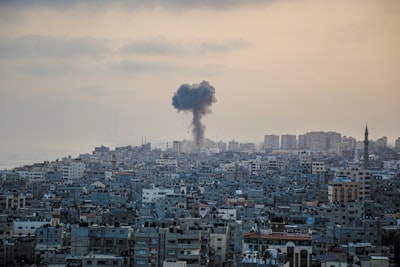Ceasefire in the Crosshairs: A Fragile Calm in Middle East Turmoil
The current ceasefire between Iran and Israel represents a rare moment of pause in a region defined by volatility and mistrust. The announcement from a Trump-appointed envoy that talks with Iran show "promise" signals more than just diplomatic optimism—it hints at shifting ground in a decades-old confrontation that has global ramifications.
Calm or Stalemate? The Significance of the Ceasefire
At its core, the ceasefire between Iran and Israel is not just about the absence of gunfire. It reflects intense pressure from global powers anxious to prevent a regional war that could disrupt energy markets and further destabilize the Middle East. Temporary stillness has often masked unresolved grievances, and the ceasefire's durability remains uncertain, given the long shadow of mutual suspicion.
Main Players Explained
| Actor | Relevance & Stance | Core Interests |
|---|---|---|
| Iran | Aspiring regional power, opposes Israel | Influence in Syria, countering the US and Gulf states |
| Israel | Sees Iran as existential threat | Security, deterring regional adversaries |
| US (Trump envoy) | Key mediator, shifting policy posture | Containment of regional conflict, balancing alliances |
The Promise—and Peril—of Negotiations
The revelation that talks with Iran appear "promising" is a notable break with the recent past. Under the Trump administration, US-Iran relations hit historic lows, especially after the withdrawal from the nuclear deal. Any thaw—even incremental—could reshape security dynamics, economic prospects, and the broader calculus of US engagement in the region.
However, history cautions against easy optimism:
- Negotiation Gaps: Iran’s insistence on regional autonomy and Israel’s uncompromising security doctrine often leave little room for genuine progress.
- Domestic Pressures: Both governments face hardline constituencies opposed to compromise.
- Proxy Tensions: Quiet on one front rarely means peace elsewhere—Yemen, Syria, and Lebanon remain powder kegs.
Why This Ceasefire Matters
Even if temporary, the current peace has outsized consequences. Oil markets react instantly to Middle East tremors; a breakdown could send prices soaring. Humanitarian crises often escalate when hostilities resume, as seen in Gaza and Syria. Furthermore, broader US-Iran engagement affects everything from sanctions policy to NATO's strategic calculations.
Key Dilemma: Durable Peace vs. Short-Term Pause
| Advantage of Ceasefire | Drawback/Challenge |
|---|---|
| Buys diplomatic time | May embolden spoilers on both sides |
| Reduces civilian suffering | Underlying issues remain unresolved |
| Shows potential in US diplomacy | Risks rewarding intransigence |
Broader Trends: Regional Realignment
Behind the headlines, the Middle East is experiencing a slow, complex realignment:
- Arab states forging closer business ties with Israel, diluting Iran’s influence.
- U.S. focus shifting to Asia and domestic priorities, prompting regional players to recalculate risks.
- Diplomacy over domination is increasingly seen as the pragmatic path—though neither Tehran nor Jerusalem seems ready to fully embrace it.
The current ceasefire and new diplomatic overtures offer a fleeting window for creative diplomacy. Yet, without addressing the region’s deep-seated grievances, even the most promising negotiations risk unraveling.
This article was inspired by the headline: 'Iran-Israel ceasefire holding, Trump envoy says talks with Iran 'promising' - Reuters'.

Comments
No comments yet. Be the first to comment!